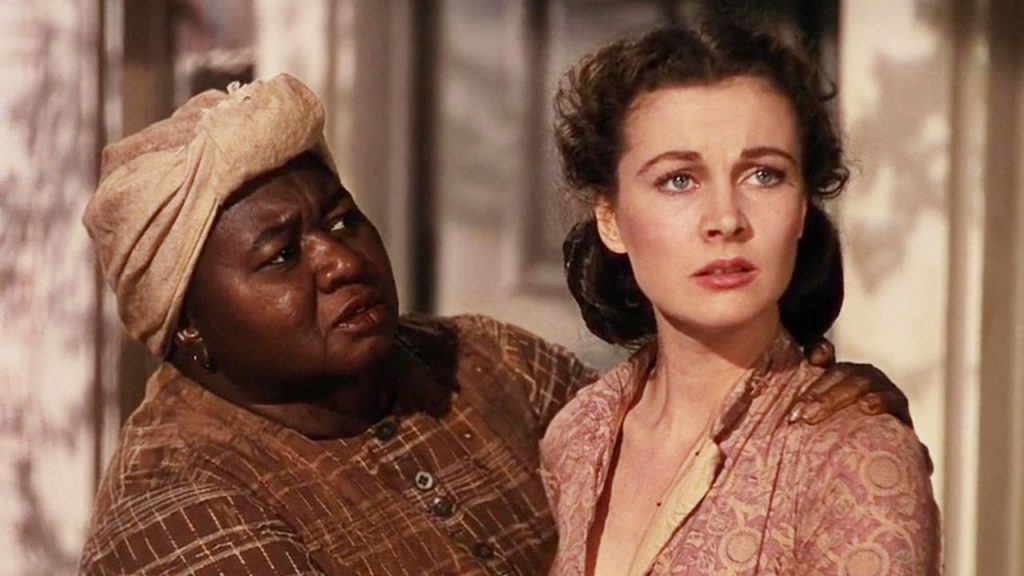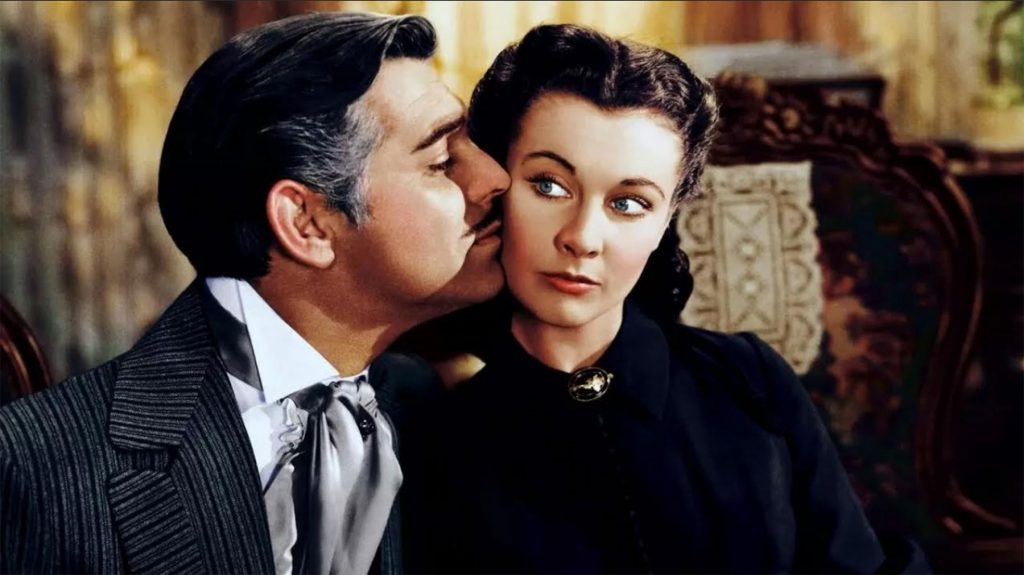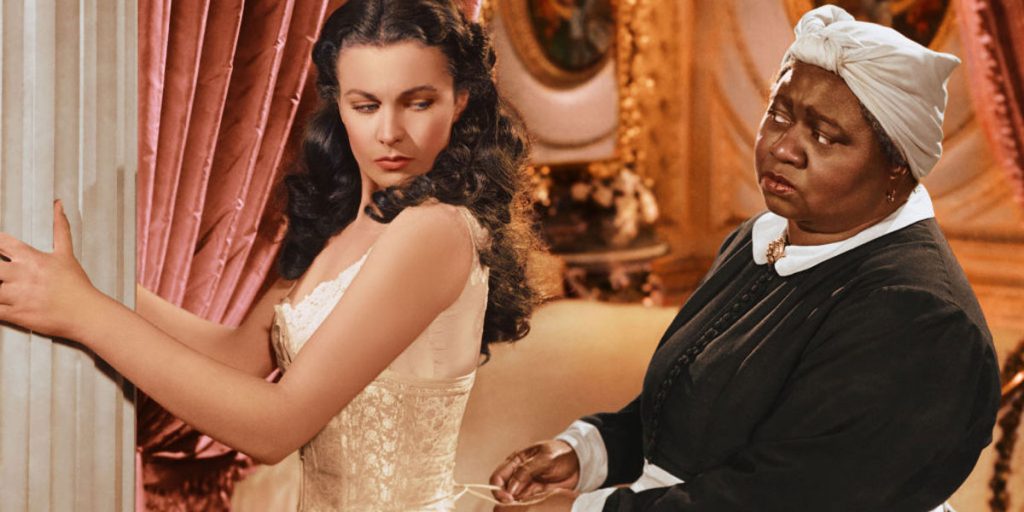Gone with the Wind has been removed from HBO Max’s catalogue because of its “racist” content. But what does this decision imply for the industries of film and art? Can we grant art its autonomy or will we only ever be able to experience it through the thick lenses that will be given to us?
It’s not easy to try and be objective when saying inconvenient things about films and other artworks that you consider to be indisputable masterpieces. The “Gone with the Wind vs HBO” case, at the centre of controversies these past few days, aroused contrasting feelings in me, leading me to approach it with a touch of discomfort. The inherent risk of mutual misunderstanding (between those who write and those who read) is always just around the corner, and it cannot be denied that, in this day and age, tackling certain subjects is like walking on eggshells.
Which is why I’ve decided to approach it from another angle, starting with an anecdote that dates back to last year, and an issue I became aware of through a friend’s vlog: it’s a debate that began on social networks, at the centre of which was Gian Lorenzo Bernini’s The Rape of Proserpina. The artwork, an internationally renowned sculpture, was accused by some of being “disrespectful”: a way of “exalting rape” that should not be exhibited and celebrated as a masterpiece. In more extreme cases, some even went as far as to suggest actual physical “destruction”.
It’s obviously an exaggeration, and the result of theses and observations of people who are not even minimally aware of what they’re talking about, and far be it from me to explain the reasons why the idea of destroying the artwork is delirious, to say the least. But it’s an event that can enable us to rightly approach the delicate and dangerous times we are living in – times in which the thread that ties together Mr Someone’s senseless joke on a social network with The Somewhere Times’s front page news, with the Production Company/Government of the Day’s rash yet dangerously damaging stance on the artwork in question, becomes thicker everyday. One may define it as the Bermuda Triangle of All the Wrong Choices.

The issue behind the “Gone with the Wind vs HBO” case also lies between the waves of this insidious Triangle of Incomprehensions. A big corporation has been shattered first by the COVID-19 crisis and then by a country dealing with a second Civil War, following the tragic and well-known sequence of events surrounding George Floyd’s death. In the vortex of anxiety and possibly also pressured by external requests, the corporation in question decides to send what they believe to be a strong message, in reaction to the difficult times they are living. The perfect Scapegoat is Gone with the Wind, which is therefore (temporarily) banned and classified as a “racist film”.
And of course it’s a “racist film!” Gone with the Wind is a 1939 movie set in 1861 Georgia, the year when the American Civil War began, with the young daughter of cotton plantation owners as protagonist. Even judging by these few lines, it would be absurd to imagine that Gone with the Wind could be, in any way, the kind of “politically and socially adequate” film we deem appropriate in 2020.
Gone with the Wind represents all that, at this time, is inconvenient in the United States: racism, internal war, the exaltation of the South as if it were a fairy tale – an ancient, long-lost, shiny reign. A film that wouldn’t be made today (or would at least need to be heavily revised), precisely because of the story it tells.
The film begins with a tale: “There was a land of Cavaliers and Cotton Fields called the Old South”. A story in which, practically speaking, in our current world, the protagonist would be The Villain.
Scarlett O’Hara (Vivien Leigh) is the rich and spoiled daughter of land owners, whose life is suddenly turned upside down when the war begins. Through the eyes of a young woman, daughter of slave owners in a slave-owning society, Gone with the Wind tells the story of how the world as she knew it ended – a world that, from her point of view, was both wonderful and perfect.
In 2020, we know that that wasn’t the case: we know that we are dealing with a product that doesn’t minimally reflect what was the real, tragic condition of thousands of human beings, who were then considered to be equal to animals simply because of their skin colour. Today, we are well aware that Gone with the Wind depicts slaves as caricatures – secondary figures who are heavily stereotypized, just like Mammy (Hattie McDaniel). The positive, nearly domestic relationship shown between these figures and the “owners” is clearly both unrealistic and unfathomable for modern society, and would never be represented in a contemporary movie. In a memorable scene from the film, during the Battle of Atlanta, Scarlett meets some ex-slaves who have been “sent to dig trenches to save the white soldiers” of her plantation, and she greets them warmly. We witness a friendly exchange between Scarlett and Big Sam (Everett Brown), one of the slaves, which enables us to understand how heavily distorted a view of reality both the screenwriters and Scarlett herself had.

Today, Gone with the Wind is a film that is, in many ways, inconvenient, and that deals with a problematic, extremely delicate and painful issue such as racism in the wrong way. Just like many producers and distributors, HBO doesn’t know how to react to current circumstances, and this led the company to the decision to remove the film from their catalogue, in order to add it back again in the future (at least according to official sources), with a commentary that accompanies the viewing of the film with “a discussion of its historical context, while denouncing its racial missteps“.
It’s a choice that might be praised for its attempt to provide historical and cultural context to a film that undoubtedly needs it, but it’s also a choice that, in my opinion, shines a light on a deeper, much more disquieting issue: the idea that, without this explanation, the coundn’t possibly be considered to be worth watching. Which leads us to go back to the removal of the artwork (and the delirant comments of those who suggest “locking The Rape of Proserpina in a storage closet because it encourages rape”), and to the inability to recognise that the artwork itself could have enough autonomy to face an audience without the need for “explanations”.
Which is scary, because Gone with the Wind is also an incredibly modern film, both in terms of technical features and of content. It contains some of the best choreographed action scenes in film history – scenes that, to this day, would probably still be filmed in the exact same way. One of those scenes is Scarlett’s escape from the clinic where she works as a nurse, and the long shot that follows her as she runs upstream, in the middle of a crowd.
It’s even scarier if one considers that this film’s greatest merit lies precisely in Scarlett O’Hara, one of the most beautiful, authentic and modern figures that have ever been written and transposed onto the screen. Scarlett is The Female Character: she’s the woman that every woman should want to see, stronger than any politically correct representation we can depict to this day. She’s a woman who falls disastrously, more than once, but always gets back on her feet, taking control of her own life and becoming the modern “self-made woman”. She sees the world as she knew it crumble upon her, yet she rises from the ashes stronger than ever.
She’s frowned upon by everyone who knows her, especially other women, because it’s unimaginable for a woman to do what she does: “she even drives her own buggy”. Her tormented love story with Rhett Bulter (Clark Gable) is so authentic and modern for its time that it puzzles us to think of how many backward steps we’ve taken, in the meanwhile, even in narrating love.

We live in a world in which the correct female representation is that of a perfect woman, who knows how to do everything, is ready for everything and, above all, is beloved and respected by everyone. A sort of angelic (divine?) modern creature who often cannot be granted love, as love would make her representation more fragile and possibly even offend someone.
The idea that a big production company – or anyone, for that matter – should think that watching a film with Scarlett O’Hara would not be an appropriate thing to do in the time of #MeToo makes me think that, unfortunately, dark times lie ahead of us. Times made of lies and smokescreens, in which people will only be able to see what someone decided they can see, and only in the way that someone thinks it should be seen (does any of this remind you of anything? It does, to me). Times in which it will be assumed that the general public won’t be able to understand or accept anything without only observing one aspect of it, and that, therefore, the only way in which it will be possible for us to know and enjoy that thing is if it’s adequately contextualised, following pre-determined standards.
Unfortunately, it’s not by hiding it, ignoring it or censoring it, that the problem of racism (and any other problem, no matter how serious) will be solved. If anything, another problem will be added to the original problem: that is, an increasingly widespread inability to critically observe, and an evergrowing “ignorance” and influencability, which will inevitably generate new problems and new injustices.
The unfortunate truth is that the ban of Gone with the Wind is dangerous because it’s the beginning. It’s only the beginning of an evil that might be just as big as those that, with this clumsy gesture, we’ve been trying so hard to fix.

 loudandclearreviews.com
loudandclearreviews.comRead this article in Italian: HBO vs Via col vento: quando l’opera d’arte diventa il capro espiatorio perfetto

